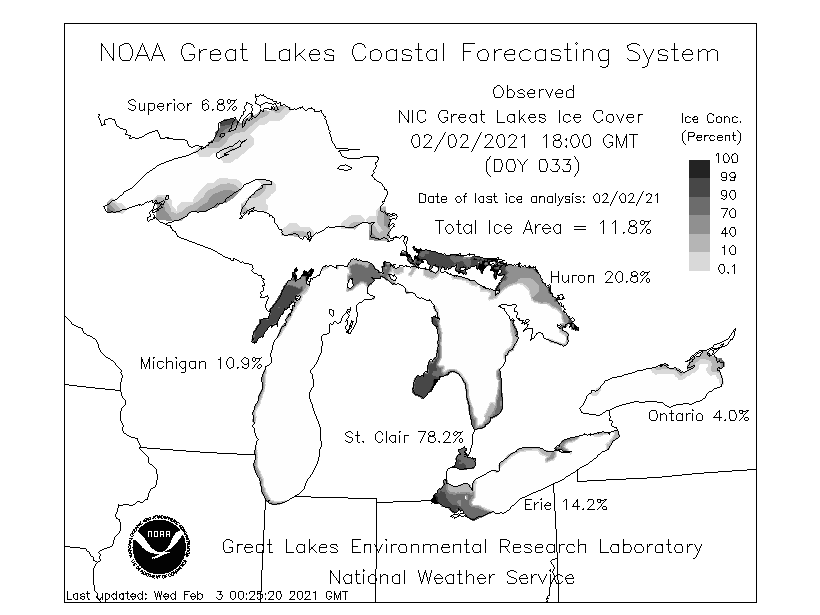(WXYZ) — Seasonal winter ice coverage on the Great Lakes is expected to be significantly below average for 2020-2021, according to the NOAA's Great Lakes Environmental Research Lab.
As of Jan. 30, the GLERL predicts a maximum ice coverage of 30% on the Great Lakes. The average maximum ice coverage is 53.3%, according to the NOAA.
Temperatures have been relatively warm for winter in the past month, which has contributed to the lower ice coverage, but arctic air is moving into Michigan in the next several days which could increase ice coverage.
According to the NOAA, the predicted maximum ice coverage for the season on each lake is below.
Lake Superior – 31% (Normal average is 61.5%)
Lake Michigan – 22% (Normal average is 40%)
Lake Huron – 41% (Normal average is 64.6%)
Lake Ontario – 7% (Normal average is 29.8%)
Lake Erie – 58% (Normal average is 81.2%)
Those predictions can change, according to the NOAA. Each forecast iteration will take into account the latest surface-air temperature data, which drives ice formation.
"A lot can still happen as there are many weeks of winter left. Historically, much of the major freezing happens in February," the NOAA wrote.
As of Tuesday, Feb. 2, the ice coverage on each of the Great Lakes is below.
Lake Superior – 6.8%
Lake Michigan – 10.9%
Lake Huron – 20.8%
Lake Ontario – 4%
Lake Erie – 14.2%




